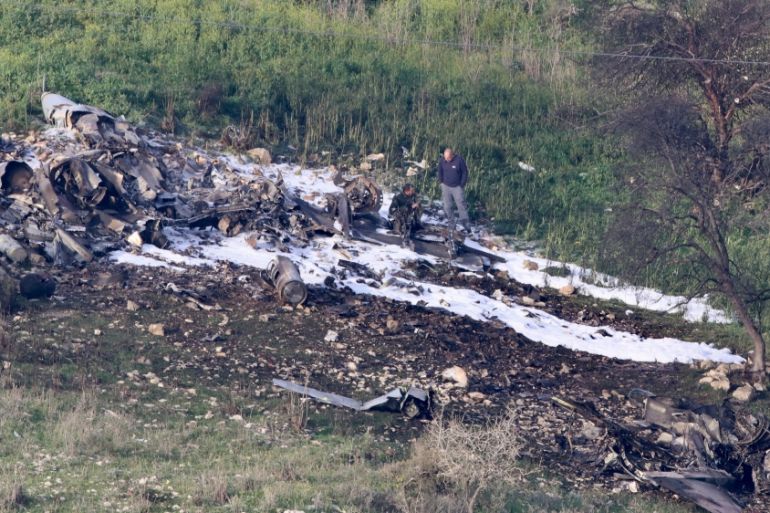Untying the knot of the Israeli attack on Syria
This latest turmoil reminded Israel it has no allies in Syria nor control over developments.

Recent developments in Syria remind us how convoluted the country’s multi party conflict is. The Syrian regime used a Russian made S-200 anti-aircraft missiles to shoot down an American made F-16I retaliating to the intrusion of an Iranian made unmanned aerial vehicle (UAV). Most importantly, however, these developments gave Israel a reality check that it has no allies in this tug of war next door.
While the exchange of fire was described as unprecedented, it was not an unusual pattern. Hezbollah has been flying drones over Israel since 2012 and Israel has been repeatedly targeting both the Syrian regime and the Iranian arms shipment to the Lebanese group. Israeli Prime Minister Benjamin Netanyahu visited Moscow on January 29 and his cabinet met in the Golan Heights on February 7, which were indications that Israel was considering air attacks. What’s unique though about the latest confrontation is the Syrian regime’s retaliation and its accidental ability to incapacitate the Israeli F-16, which raised questions whether new rules of engagement are being set. The short answer is no, here’s why.
The dynamics that set the context of these air attacks persist. Israel remains the leading opposition against the US-Russian agreement in Syria reached last July. These air attacks were a message to Washington and Moscow as much as they were to Iran. It is also increasingly obvious that Israel goes to Moscow, not Washington, on all issues related to Syria, including when launching air attacks. Israel can often push the envelope but will not risk a political clash in Syria with both the US and Russia.
The fact is the US and Israeli interests are not aligned in Syria since 2014, when former President Barack Obama Administration decided to coexist with Iran in parallel battles against the so-called Islamic State in Syria and Iraq. The Pentagon, under President Donald Trump, maintained this tacit understanding and reaffirmed the top priority of protecting US troops and long-term interests in northern Syria. In return, Israel’s top priority is to prevent Iran from establishing a permanent presence in Syria and a supply line to Lebanon.
Meanwhile, Russia remains until further notice the kingmaker in Syria. While Iran and Israel are trading threats, we are not entering a “new strategic era”, as Hezbollah has claimed. There is no deterrence between an Iranian made drone and an American made F-16, both in the Syrian air with Russian consent. In November 2016, Russia has repaired the Syrian S-200 to operational status, which practically means that no missile can likely be launched without prior knowledge from Moscow, most notably if the target was Israel. Russia’s latest intricate balance between allowing Israel to launch air attacks and the Syrian regime to respond is a dangerous game that solidifies Moscow’s powerbroker status.
Both Israel and Iran gained from that brief confrontation as they maneuver their psychological and intelligence wars. Israel managed to shift attention to the issue of deterring Iran as the US and Russia are preoccupied with Turkey, the second neighbouring country seeking to alter the Syrian status quo.
Israel has flexed its muscles in Syria but achieved no strategic objective. Netanyahu, who is battling serious corruption charges, cannot find a better scenario to show how invaluable he is to Israeli politics. The Syrian regime gained a needed propaganda tool about its fighting capabilities to prop up the base and distract from the military operations in the outskirts of Damascus. Beyond that, nothing has changed on the ground. The reason why it is the first time in 36 years an advanced Israeli weaponry was shot down is that Israel did not confront a traditional Arab military since 1982.
This latest turmoil also reminded Israel it has no allies in Syria nor control over developments. The Kremlin urged Israel to deescalate tensions while the White House’s message to Iran was to merely “cease provocative actions and work toward regional peace”. The US has been asking Israel to rein in its rhetoric against Lebanon and to show restraints in Syria. However, the Israeli cabinet’s rational on February 11 was “we will continue to harm anyone who tries to harm us”, a rule of retaliation that can only go so far.
Indeed, uncertainty in Syria is making Israel anxious. Netanyahu’s end goal seems to be making amendments to the US-Russian agreement and creating a wedge between Iran and the Syrian regime, which are both improbable outcomes. There are no indications that a full-fledged war between Iran and Israel is feasible in the short and medium term. However, the risks are high in the long term, as the dominant powers turn the page of their proxy wars and begin to rethink their postures in Syria.
The views expressed in this article are the authors’ own and do not necessarily reflect Al Jazeera’s editorial stance.
